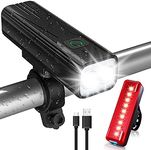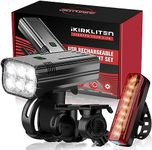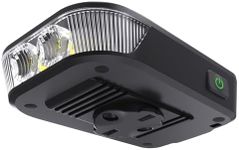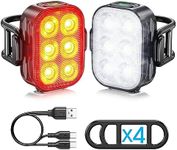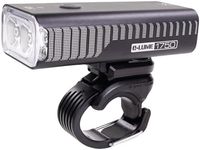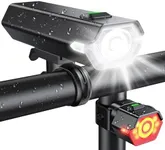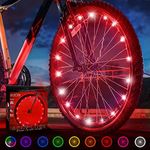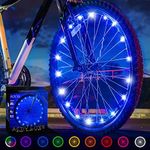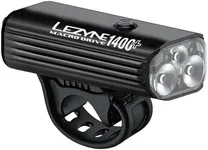Buying Guide for the Best Lights For Bikes
Choosing the right lights for your bike is essential for both safety and visibility. Whether you ride in the city, on country roads, or off-road trails, having the right lighting can help you see where you're going and make sure others can see you. The best bike lights for you will depend on when, where, and how you ride. Understanding the key features will help you make a smart choice that fits your needs and keeps you safe on every ride.Brightness (Lumens)Brightness, measured in lumens, tells you how much light the bike light produces. This is important because it affects how well you can see and be seen. Lower lumen lights (under 100 lumens) are good for being seen in well-lit city streets, while medium brightness (100-500 lumens) is suitable for darker urban areas or early morning rides. High brightness (over 500 lumens) is best for unlit roads, trails, or night riding. To pick the right brightness, think about where you ride most often: city riders can go with lower lumens, while those on dark roads or trails should choose higher lumens for better visibility.
Beam PatternThe beam pattern describes how the light is spread out in front of you. A wide beam lights up more of the area around you, which is helpful in urban settings with lots of obstacles, while a focused, narrow beam shines farther ahead, which is better for fast riding or dark, open roads. If you ride mostly in the city, a wide beam helps you see pedestrians and cars. For rural or trail riding, a narrow, long beam helps you spot hazards further away.
Battery LifeBattery life tells you how long the light will last before needing a recharge or new batteries. This is important so you don’t get caught in the dark. Short battery life (1-2 hours) is fine for short commutes, while longer battery life (3-10 hours or more) is better for longer rides or if you often forget to recharge. Think about your typical ride length and how often you want to recharge—choose a light that will last at least as long as your longest ride.
Mounting SystemThe mounting system is how the light attaches to your bike. Some lights use simple rubber straps, while others have more secure brackets. A quick-release mount is handy if you want to remove the light easily to prevent theft or for charging. If you switch bikes often or want to use the light as a flashlight, look for a versatile mount. For rough terrain, a sturdy, vibration-resistant mount is best.
Water ResistanceWater resistance tells you how well the light can handle rain or splashes. This is important if you ride in all weather conditions. Some lights are only splash-proof, while others are fully waterproof. If you ride year-round or in wet climates, choose a light with a higher water resistance rating to ensure it keeps working in the rain.
Modes and FeaturesMany bike lights offer different modes, such as steady, flashing, or low-power settings. These modes can help you save battery or make you more visible to others. Flashing modes are great for daytime visibility, while steady modes are better for seeing the road at night. Some lights also have extra features like USB charging, battery indicators, or side visibility. Think about which features will make your rides safer and more convenient.


